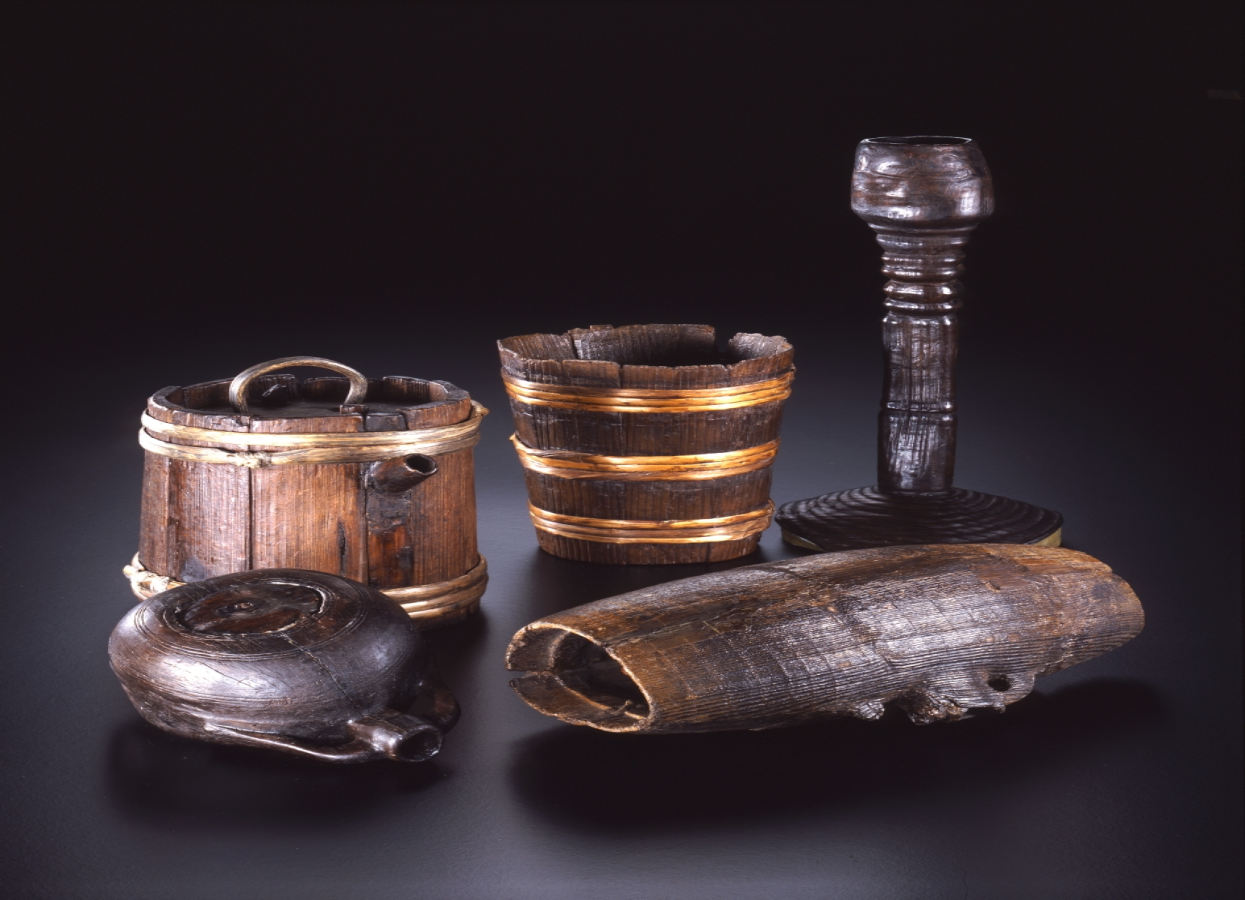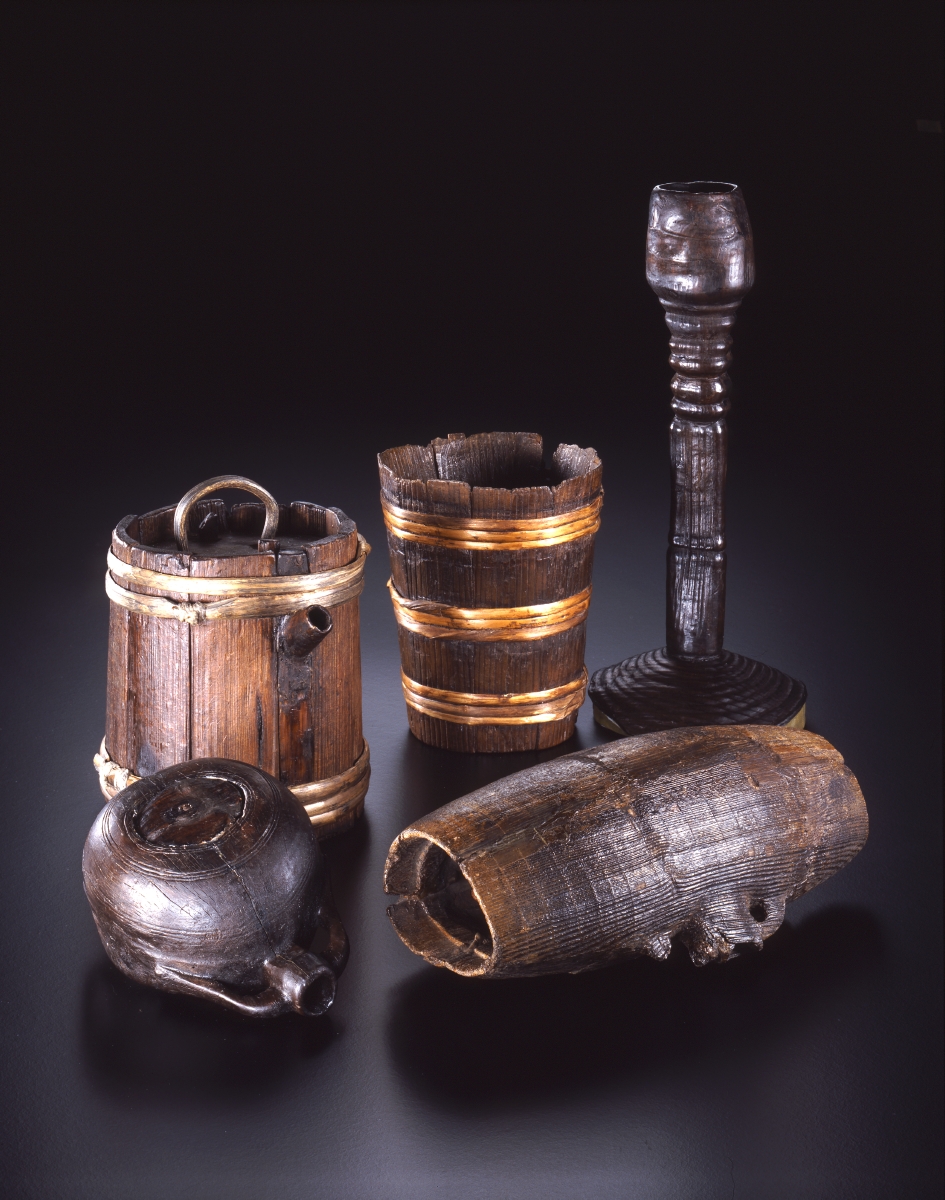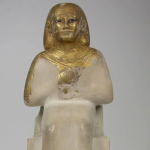1,400-Year-Old Wooden Vessels Discovered at Oberflacht Burial Site in Amazing Condition

The discovery of complete wooden vessels made approximately 1,400 years ago at the early medieval burial site in Oberflacht is a remarkable find in the field of archaeology. Wooden artifacts from this period are exceedingly rare due to the perishable nature of the material. However, the unique environmental conditions at this site have allowed for the exceptional preservation of several wooden items, including a pitcher, a canteen, a small barrel, a large beaker, and a candle holder. These items provide valuable insights into the material culture and daily life of the people who lived during this time.
Wood, as a material, is susceptible to decay and deterioration over time, especially when exposed to air and fluctuating environmental conditions. Typically, only artifacts made of more durable materials such as metal or ceramics survive from ancient times. The preservation of wooden items, therefore, requires specific conditions that limit exposure to oxygen and microorganisms that cause decay. In the case of the Oberflacht burial site, the damp environment created an anaerobic condition that slowed down the decomposition process, allowing these wooden vessels to survive in relatively good condition.
The wooden pitcher, canteen, small barrel, large beaker, and candle holder are significant not only for their rarity but also for what they reveal about the technological and cultural practices of the early medieval period. Each of these items would have played a specific role in the daily lives of the people.

The pitcher, likely used for storing and pouring liquids, indicates the importance of communal meals and gatherings. Its design and craftsmanship can provide information about the aesthetic preferences and skills of the artisans of the time. The canteen, a portable container for liquids, suggests a nomadic or travel-oriented lifestyle, possibly indicating trade or migration patterns. The small barrel, used for storing food or drink, points to methods of preservation and storage that were essential for survival, especially during harsh seasons.
The large beaker, possibly used for drinking, underscores the social and cultural practices related to consumption. The design and size of the beaker could indicate communal drinking practices or rituals associated with feasting. Lastly, the candle holder reflects the use of artificial light, an essential aspect of daily life that extends social and productive activities into the evening.
The discovery of these items in a burial context adds another layer of meaning. Burials often reflect the beliefs, rituals, and social structures of a community. The inclusion of such practical items in the burial site may indicate a belief in an afterlife where the deceased would need these objects, or it could reflect the status and identity of the individual buried there. The quality and preservation of the items might also signify the importance of the individual, as well as the community’s reverence for the dead.
The site of Oberflacht, through the preservation of these wooden vessels, provides a rare glimpse into the everyday lives and spiritual beliefs of early medieval societies. These artifacts serve as tangible connections to the past, offering insights that written records alone cannot provide. They help construct a more comprehensive picture of the period, highlighting the ingenuity, craftsmanship, and cultural practices of the time.
In conclusion, the discovery of these 1,400-year-old wooden vessels at the Oberflacht burial site is a significant archaeological find. The preservation of the pitcher, canteen, small barrel, large beaker, and candle holder underlines the importance of environmental conditions in archaeology and offers a unique opportunity to study early medieval life. These artifacts enrich our understanding of the period, providing a direct link to the material culture, social practices, and beliefs of the people who lived 1,400 years ago.











